Why is it, then, that many are commending another company for doing the opposite—not only opening on Thanksgiving but promoting itself as a place to spend the holiday? It’s a small business most people haven’t heard of, but it’s certainly worth learning about: George’s Senate & Coney Island Restaurant.
Located in Northville, MI, a small suburb of Detroit, George’s Restaurant is in many ways a typical Greek diner, serving a wide variety of Greek and other ethnic dishes, as well as a deep selection of American fare ranging from lamb shank, to stir fry, to Philly cheesesteaks. Patrons seem to appreciate the restaurant’s good food, fast service, and low prices.
What really sets George’s apart, however, is what owner George Dimopoulos has done every Thanksgiving for ten years: He invites individuals who are alone for the holiday to eat at his restaurant for free for the entire day. Yes, that’s right: people who have no one else with whom to share Thanksgiving can have breakfast, lunch, and dinner at his restaurant at no charge. He announces the offer by hanging a large handwritten sign on his restaurant's front class door: “If anyone is home alone, come eat with us for free! All Day! Thurs. November 26.”
Many businesspeople likely look at Dimopoulos’s generosity and think, “That’s a great thing to do . . . if you want to lose money.” Of course, there is some truth to that criticism. For instance, last year’s Thanksgiving Day promotion attracted more than 80 lonely dinners. If variable costs like food and servers’ wages totaled $8 per meal, that’s $640 of pure expense, not offset by any revenue.
Dimopoulos is obviously a sharp and successful businessman, so why, then, does he donate so much free dining? Dimopoulos grew up in Greece as one of eight children in a very poor family that couldn’t afford to send him to school. At age 12 he left home for Athens where he lived homeless for some time, relying on the generosity of others to survive. He now believes the right thing to do is to share the fruits of his success with others who are in need, just as he once was.
On one hand, Dimopoulos’s lonely diner offer is a cash drain that makes little financial sense. On the other hand, however, the $600, $700, or more he’s giving away is a small investment compared to the goodwill and positive press he’s generated. News media all over the country have covered the story of this special restaurant and its owner, and a photo of the restaurant uploaded to Reddit has garnered almost 5 million views. It’s safe to speculate, therefore, that the eatery also has built considerable brand equity in the greater Northville area, which is likely driving some, if not much store traffic. It would be very hard to pay the same amount for advertising and enjoy similar impact.
Nevertheless, Dimopoulos doesn’t do what he does for a financial return. He gives away dozens of meals all Thanksgiving Day because he cares about people, especially those who are alone, and wants to brighten their day. As the restaurant’s owner, he’s free to be as philanthropic as he wants, which is what makes him happy.
But what about the idea of the restaurant being open on Thanksgiving Day? If big retailers like those mentioned above close their doors for the holiday, why shouldn’t a small Greek diner follow suit? The difference is that people can live without buying clothes or camping gear on Thanksgiving. They can’t, however, live without food. Sure, someone can eat and be thankful even if alone and without a special meal, but Thanksgiving is about celebrating our blessings with others in a special way, even if that’s in a restaurant with strangers.
Dimopoulos and the employees who work with him on Thanksgiving sacrifice some of their own celebration for the benefit of many others. It’s very likely, though, that those who prepare and serve the meals are blessed many times over because of their generosity.
George’s Senate & Coney Island Restaurant supports societal values such as stewardship and respect. At the same time, the kindness is not without its business benefits given the considerable goodwill the annual tradition elicits. Taken together, the Restaurant’s free Thanksgiving Day meals represent a generous helping of “Mindful Marketing.”
Learn more about the Mindful Matrix and Mindful Meter.
Check out Mindful Marketing Ads and Vote your Mind!

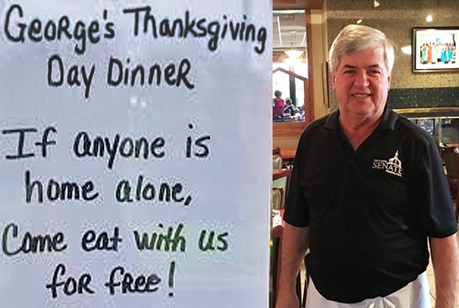
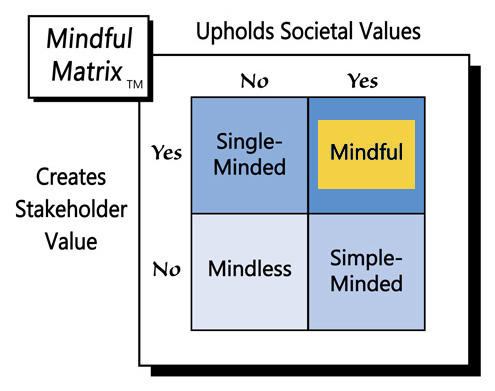


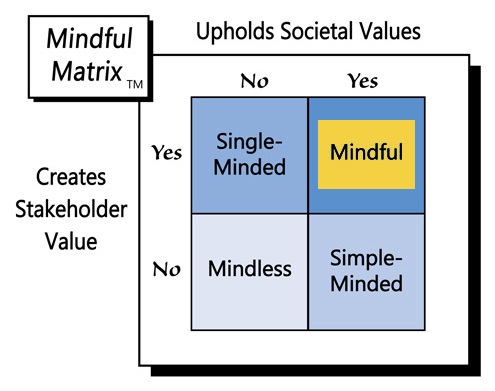


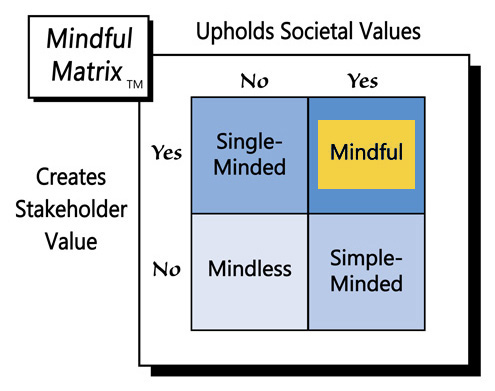


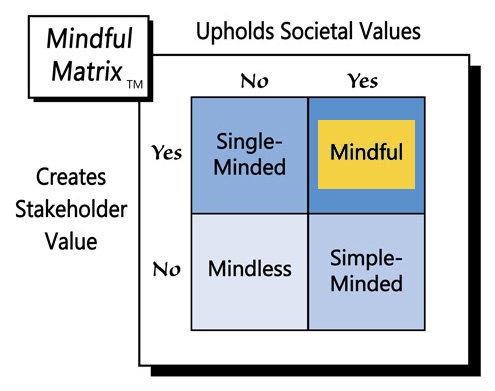

 RSS Feed
RSS Feed